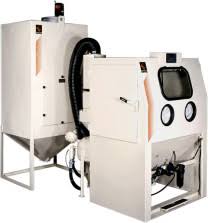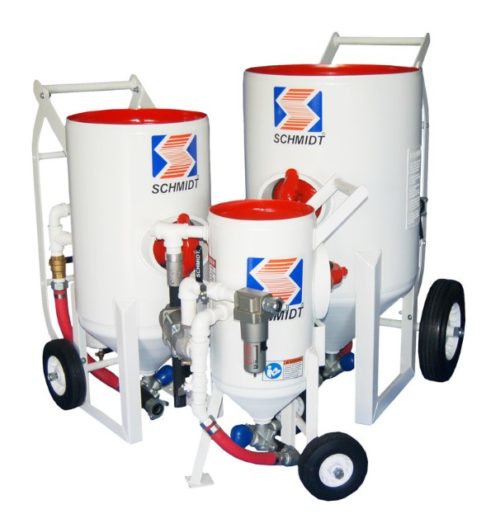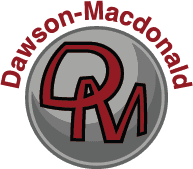An Overview of Blast Machines: Key Benefits & Selection Considerations
In the industrial and commercial sectors, blast machines—also referred to as blast finishing and blaster equipment and systems—are often employed in surface preparation operations. During such procedures, they utilize compressed air, water, or centrifugal wheels to drive solid particulates of abrasive material—e.g., glass beads, aluminum oxide, and others —into a workpiece to alter its surface characteristics, resulting in a smoother/more textured and cleaner finish.
As the finish of a material can significantly affect its workability in other processing operations and its performance in the intended application, it is essential to employ the right type of blast equipment when performing surface preparation to ensure the right type of finish is achieved.
Benefits of Blast Machines
Compared to other types of surface preparation and processing equipment, blasting machines offer a number of advantages, such as:
- Broader capabilities. These units remove coatings, corrosion, and a variety of other surface contaminants and defects from materials. In addition to improving the quality of the material’s surface finish, they can also be used to strengthen and otherwise enhance the material’s surface characteristics (e.g., increase fatigue resistance or coating adhesion).
- Higher productivity. Compared to manual and more hands-on finishing processes, blast finishing allows for faster surface contaminant and defect removal operations.
- Smaller environmental impact. Blasting operations do not require the use of potentially harmful chemicals to remove unwanted materials from surfaces. Additionally, most blasting media employed can be recycled in future operations, which decreases the total amount of material utilized and waste generated.
- Lower cleanup costs. As the blast finishing process eliminates the need for non-environmentally friendly compounds, the disposal process for waste material is much easier and, consequently, much cheaper.
Selection Considerations for Blasting Machines
As indicated above, choosing the right type of blast machine for a surface preparation project is vital. Some of the key factors to consider when evaluating blast machine options are:
- Type of blast media. Blast machines utilize a variety of blasting media in different sizes for finishing operations, depending on the base material and the material being removed. Some of the most commonly employed types are crushed or beaded glass, metal shot and grit, aluminum oxide, and plastic media.

- Blast pot size. The size of the blast pot (along with nozzle size) is directly related to the maximum amount of time a blasting operation can proceed without requiring a refill of abrasive material. For example, in sandblasting equipment, a single cubic foot of blast media utilizing a 3/16” nozzle translates to between 3–5 minutes of blasting time. The blast pot size of the selected equipment should suit the expected surface preparation operations of the facility.
- Wet blast vs. dry blast. Blasting operations can be categorized as wet or dry. Dry blasting units generate more dust than wet blast units, but they come at lower prices and accommodate a wider range of blast nozzle sizes (given the appropriate compressed air source). In contrast, wet blasters are more expensive than dry blasters, but they generate less frictional heat and dust during surface preparation operations.
- Compressed air requirements. The total volume of compressed air (in SCFM) needed for efficient surface preparation operations depends on the size of the blast orifice, the blast pressure, and the number of blast guns on the system. Suction-based blast machines generally require more compressed air than pressure-based blast machines.
- Enclosure size. The size of the blasting enclosure—whether it is in a blast cabinet or blast room—should easily accommodate all workpieces sizes without limiting material handling and positioning or other necessary procedures.
- Specialized design elements. Ultimately, the design and configuration of a blast machine should suit the needs of the facility. Some of the design options to keep in mind include stationary vs. portable units, manual vs. automated controls, and pneumatic vs. electric remote, all of which should be considered with regard to how they will accommodate the facility’s surface preparation operations.
Contact the Surface Prep Experts at Dawson-Macdonald Today
Blast machines are available in several variations, each of which is suitable for different surface preparation applications. For this reason, some companies may find it challenging to select the right type of blast machine for their needs. Fortunately, the experts at Dawson-Macdonald are here to help.
At Dawson-Macdonald Company, we are the oldest and largest distributor of surface preparation equipment in the northeastern region of the United States. While we offer a variety of equipment, one of our core product offerings is blast machines. They are available as stationary blast cabinets or blast rooms, portable blaster units, and semi-automatic or fully automatic systems.
Equipped with over 90 years of industry experience, we have the knowledge and skills to help choose the right blasting system for any facility. In addition to our distribution capabilities, we offer rental, maintenance, repair, and servicing, warranty support, installation, and training services to customers across New England, eastern New York State, the New York City metropolitan area (including Long Island), and northern New Jersey.


